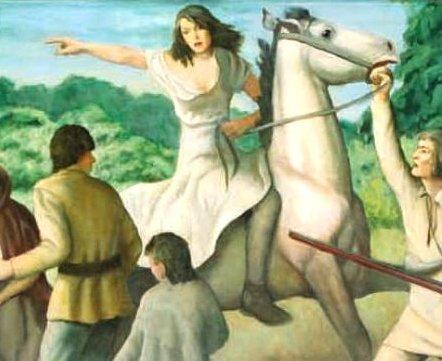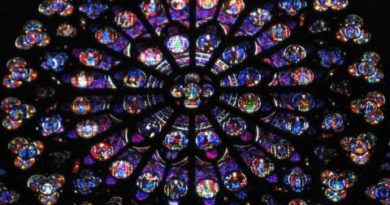Artists – Are They Workers or Entrepreneurs?
In the 1930s, over 15,000 artists were commissioned by the federal government to create art for public places, including libraries, post offices, and government offices. The artists were part of the larger workforce that built universities, bridges, dams and libraries. Public sponsored works of art from the 1930s focused on local people, places and events rather than the European ideal of formalism and tradition. Artists such as Jackson Pollock, Dorothea Lange, John Steinbeck and others received funding for their work, and many are well known for their celebration of local American people and places. The attached image is part of a Pennsylvania post office mural from this era, celebrating a local heroine who warned settlers of an impending attack from the British.
In 2009, the Smithsonian – a body of the federal government – organized a touring exhibit called “1934: A New Deal for Artists”, featuring art created during the Great Depression. Ironically, this exhibit was put together because of the reduced availability of funds. They already had the paintings, and so could avoid the expense of building a new exhibit from the ground up. The paintings depict American life: factories, subways, farms, soup lines and shelters for the homeless. The art was funded by federal programs, but gave pride and emphasis to individual communities, people and events. The artists were basiclly working for the federal government, receiving payment from the government to create art for federal offices and buildings. For 70 years, the funding of art through government programs was taken for granted. However, we now live in a time of change.
Recently, the role of an artist has been shifting from that of a worker who is part of the American workforce, to that of an entrepreneur, a creative contributor to economic development – both governmental and corporate. Artists must market themselves, demonstrate their value, and their work is to be validated by concrete monetary return. What is left of state funded art is now being linked to endeavors such as job creation, tourism, education, and publicity. In Wisconsin, the State Arts Board has been transferred to the Department of Tourism, and many other states have greatly reduced their arts budgets. Kansas has eliminated 100% of all funding for the arts!
So the question remains: how will art be affected by this new model? Will the appreciation of local culture and beauty be replaced by marketability? Will artists choose to explore local historical themes whether or not they sell in the marketplace? Only time will tell how significant this change is, and how it affects local American society.




